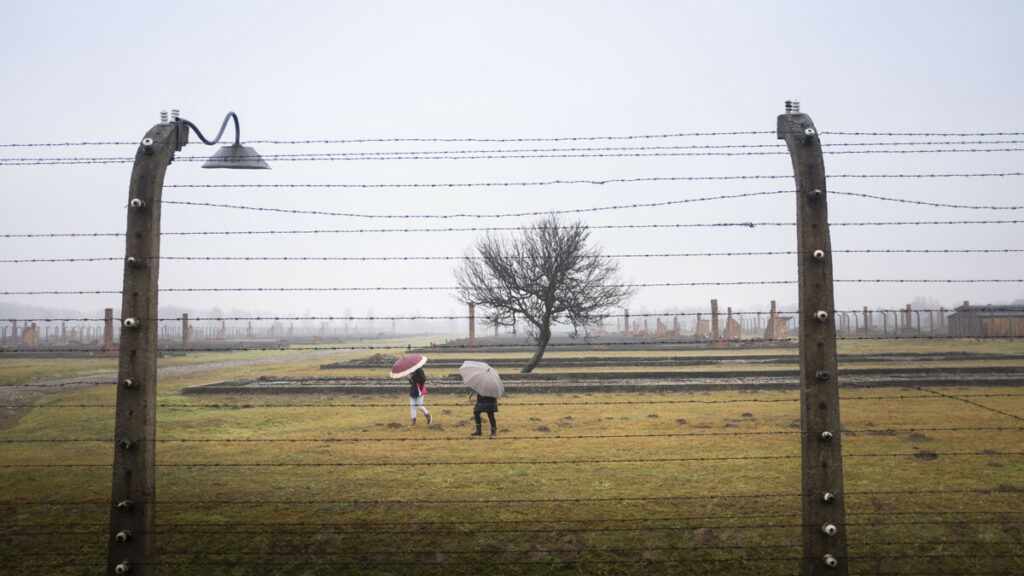By: Kelvin Joseph*- IMB
Winter scenes at the Auschwitz-Birkenau concentration camp near Kraków, Poland, are never cheerful and the weather usually has a big part to play. Even the cheerfully colored umbrellas of tourists exploring the ruins of the old camp barracks cannot change what history wrote there—the scar of concrete fenceposts and lives lost remain.
My first time to visit the infamous Auschwitz-Birkenau concentration and death camp in Poland took place three years ago.
My stomach was sick with the feeling of being in a place where more than a million people’s lives were exterminated just 75 years prior.
Let that sink in — over a million people, murdered at this very location.
This was the largest of the Nazi concentration camps. The camp was abandoned in January 1945 when the Nazis heard the Soviets were on their way. The Nazis marched 60,000 prisoners to other locations. Left behind were piles of corpses and thousands of emaciated prisoners.
Nine months later, the deadliest conflict in human history — World War II — would end with the surrender of Japan. The victory belonged to the Allied forces, who fought long and hard.
Over 416,000 United States soldiers gave their lives fighting in the war. Over 10,000,000 Allied forces died in total.
My wife and I had moved to Poland just over a year before this photo was taken. Three years later, as I go about my ministry, I see the town on the map almost every day. But the first time I was there, I stepped across the railroad tracks and saw umbrellas framed in the death-camp fence.
I sprinted to catch the moment.
Just before visiting Auschwitz, we had toured a museum dedicated to the Jewish life, communities and culture of southern Poland prior to the Holocaust. So much of the history was on my mind and I felt the despair in my gut.
And here was a tourist’s brightly colored umbrella among the ruins of the former camp.
Looking back, now, after learning more about both the Polish views of their own history and the distrust the Holocaust began among many Jews, I hope that my presence in Europe is like that umbrella — the light of the gospel of Jesus Christ in a place of spiritual darkness.
That umbrella stands out to me because it was a spot of color on that awful ground.
The most famous scene from the Birkenau death camp. The Nazis brought entire trainloads of people into the camp, nearly all Jews, and most were immediately sent to the gas chambers.
This is perhaps the most famous scene from Birkenau. These tracks led to death for so many Jews.
I took this image of the railroad tracks as a catalogue of the history. There is no way I could improve on an image seen millions of times already. But I wanted to catalogue the scene in my own mind and camera.
I don’t want to forget the history.
Above the gate to the Auschwitz concentration camp are the words “Work Makes Free.” This is a famous scene from World War II and the Holocaust. Strangely, time has made the scene somewhat less visible as the trees have grown up and the gate no longer stands as stark against the sky as in my memory of photos I have seen.
I shot this image as a panorama — several photos combined edge-to-edge to get the whole scene with a longer 85 mm lens. I wanted the people and buildings to be out of focus and the fast aperture on the lens gave the best depth of field, putting the emphasis on the famous gate.
So many images of Auschwitz display these ironic words; this camp claimed so many lives. Those who died here never saw freedom again.
As a photographer visiting the camp, I wanted to remind people of these famous scenes and these famous details from such a horrifying place.
Kelvin Joseph* and his wife, Elizabeth*, are IMB missionaries in Poland.
*Names changed for security
The post Behind the Lens: ‘I don’t want to forget the history’ appeared first on IMB.


